One of my quests in building Spitfires is to build every major version in 1/48 scale. FOr most versions, this isn’t a problem, as there are kits on the market for just about every Mark of Spitfire.
But one of the ones that always eluded me was the Spitfire Mk. 21. This was essentially a mating of the revised wing found on the Mk. 22 and Mk. 24, and the “traditional” Spitfire fuselage.
It’s possible to build this Mark with a combination of the Academy Mk. XIVc fuselage, and the Airfix Mk. 22/24 wing. But I’ve never been a fan of bashing two kits just to get one. I’d rather build the two, and search for a better solution.
A few years ago, Aeroclub released a Mk. 21 fuselage that was designed to fit the Airfix Seafire 46/47. The idea behind it was brilliant. The Seafire kit had two wings- one folding, the other not. If the modeler used the folding wing for the Airfix kit, that left a non-folding wing as a spare. Combine the Aeroclub fuselage, and a few additional bits with it, and you get your Mk. 21 without any kit wastage.
Of course, I missed out on the release of the Aeroclub fuselage. So I’ve been looking for one for quite a while. Thankfully, a commission build came my way- the full Airfix Mk. 22 kit, plus the Aeroclub bits. Now I could not only build the Mk. 21, but get paid to do so!
Construction itself is simple. You simply substitute the Aeroclub fuselage for the Airfix one. Because the Airfix kit is a bubbletop, the conversion set provides a few cockpit parts. However, I thought they looked a little sparse. so I cobbled together resin bits from the spares box, and ended up with a fairly nice looking (though probably not entirely accurate) interior.
Assembly of the kit was straightforward. The Aeroclub fuselage went together nicely. My only complaint is that the panel lines were a bit soft, due to the low-pressure injection molding process used to produce it. Other than that, it looked great.
I did notice that the carb intake did not fit nicely under the cowl. The carb itself had a prominent lip around it that was supposed to slot into the lower cowl part of the Airfix kit. The Aeroclub fuselage didn’t have this area molded well, so it prevented a good fit. I was considering try to hack up the carb intake, then I spied the Airfix lower cowl part sitting in the box. I held it up to the fuselage, did a few simple measurements, and realized that if I cut away the Aeroclub fuselage’s lower cowl, and glued the Airfix one in place, it would work out nicely. I hacked up the fuselage a bit (something I’m normally averse to doing) and glued the Airfix part on. It didn’t fit perfectly, so I added some Tamiya Basic Putty. After sanding and rescribing, it looked the part. And now the carb fit perfectly.
The rest of the build itself was uneventful. The wings fit well enough to the conversion fuselage. The tailplanes slotted in place, and it was ready for paint.
The trick in building a Mk. 21 is finding markings. As far as I know, only one set has ever been made, and it’s out of print. I found it at one place in Australia, but they never sent them along… so I had to try elsewhere.
Eventually a kind fellow over on Hyperscale offered fuselage codes and serials numbers he’d made himself. Of course I readily accepted the offer.
And then I realized it was for a six-bladed version of the Mk. 21, not the five-bladed version. So back online I went, and a member of the Agape forums came through with a six-bladed prop set, ironically from Aeroclub.
Painting was simple enough- I used the Tamiya trio of XF-81/82/83, and XF-21 for the fuselage band. I rummaged through my spares for injection molded canopy parts, as I did not want to wrestle with the vacform part provided by Aeroclub.
Markings were a mix of the donated decals, kit decals, and more from the spares box. Because the aircraft was flown by Air Vice Marshall J. W. Baker, I figured it wouldn’t have gotten too dirty, so only light weathering was applied.
Once it was finished, I was quite happy with the result. And a check of my Spitfire build list showed this to be Spitfire no. 70 that I have built. I thought it highly appropriate that such a milestone was marked with this odd Mark of Spitfire.
It’s not a bad conversion at all, if you can get your hands on the Aeroclub fuselage. And you’ll be rewarded with a Spitfire model not too many people have!

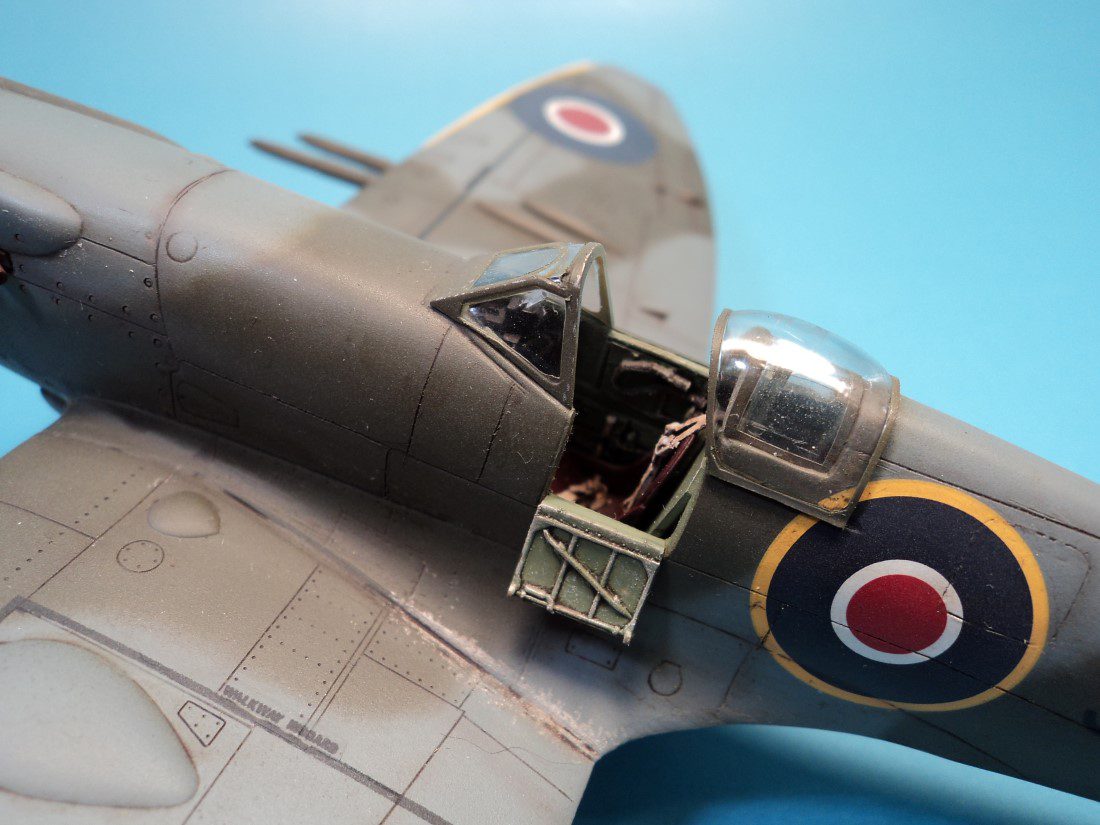

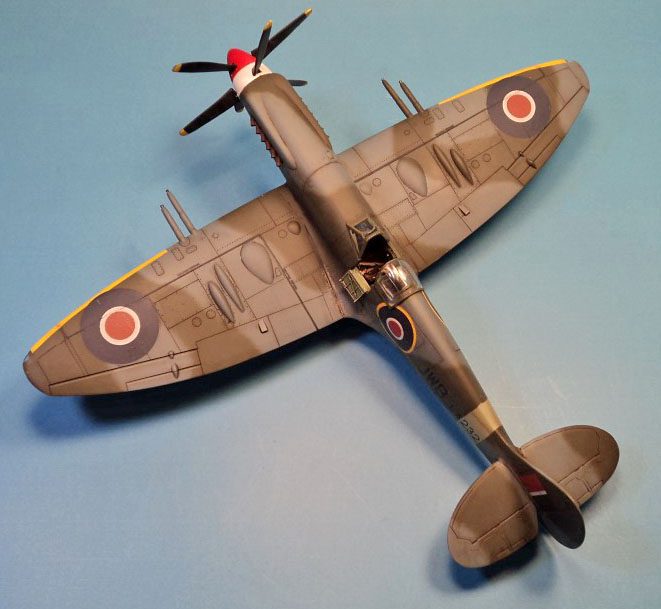




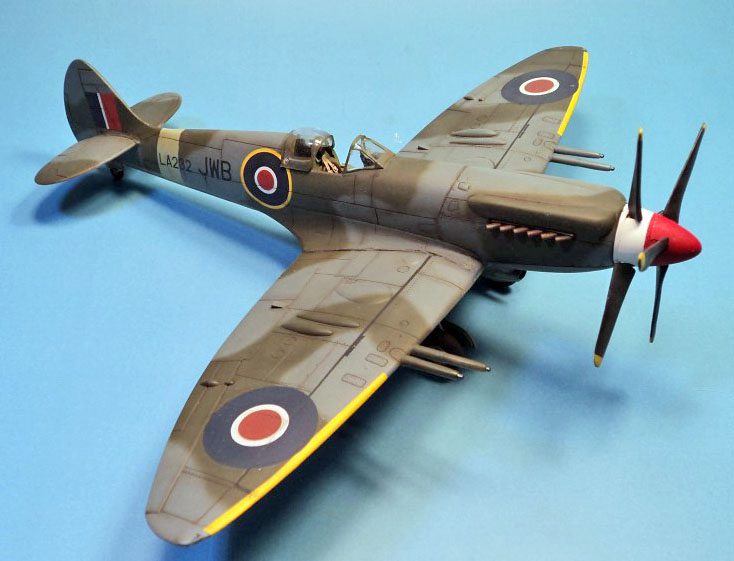




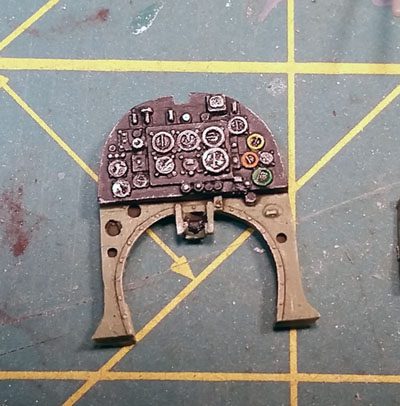
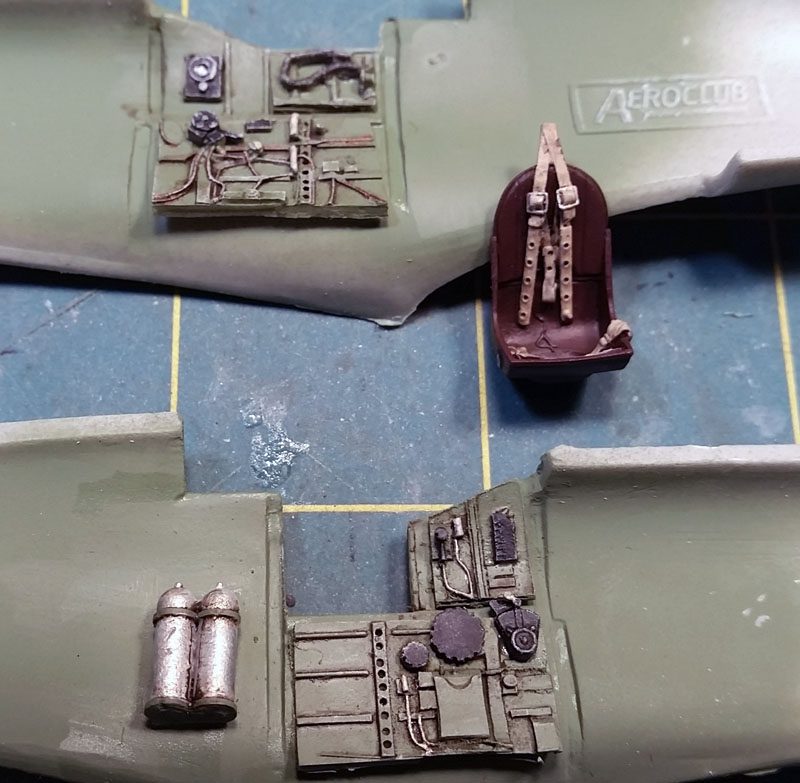


Leave a Reply